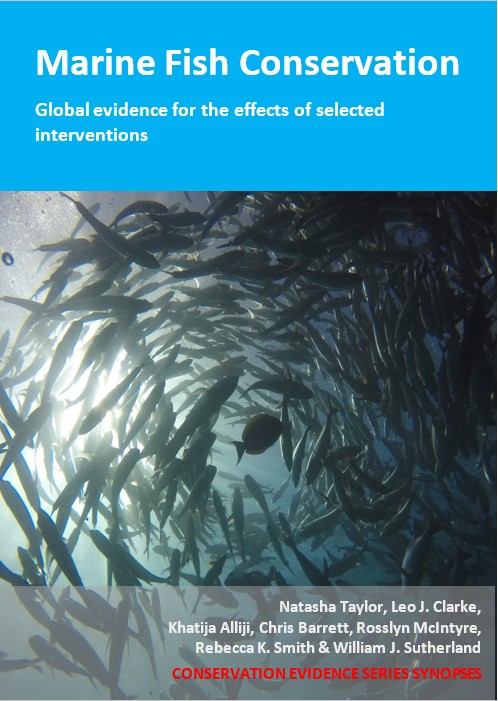Restrict fishing activity (types unspecified) in a marine protected area
-
Overall effectiveness category Awaiting assessment
-
Number of studies: 2
View assessment score
Hide assessment score
How is the evidence assessed?
-
Effectiveness
not assessed -
Certainty
not assessed -
Harms
not assessed
Study locations
Supporting evidence from individual studies
A review in 1994 of 11 studies published between 1982–1994 on the effects of restricting fishing activity (types unspecified) on fish in marine reserves across the world (Rowley 1994) reported that 10 studies found higher fish abundances, five found fish size was larger and one found a greater number of fish species, inside compared to outside reserves. Overall, 45–73% of fish species surveyed were more abundant inside reserves compared to outside (where reported). In addition, in one reserve 18 months after protection from fishing had failed, abundance (catch rates) decreased by 57% (hook and line), 58% (gill net) and 33% (trap fishing). Twenty studies of reserves that were considered to provide some form of real protection from fishing (for both finfish and shell fisheries) were reviewed (search method was not reported) and examples discussed mainly from sub-tropical and temperate marine reserves. A total of 11 studies reported effects on fish species. Studies were carried out in the Pacific, Atlantic and Indian Oceans and the Mediterranean Sea.
Study and other actions testedA site comparison study in 1999–2001 at four patch reef sites in the Indian Ocean, Tanzania (Kamukuru et al. 2005) found that inside a marine park with low fishing intensity, blackspot snapper Lutjanus fulviflamma were larger and older and had lower overall and fishing mortality rates, but no difference in growth rates than snapper in adjacent more intensively fished areas. Average size of snapper in low fishing areas was larger (211 mm) than the heavily fished areas (155 mm). The maximum snapper age was higher in low fishing intensity areas (low: 18 yrs, intensive: 8 yrs), and most individuals were 6–10 years old compared to mainly 2 and 4 year-olds in intensively fished areas. In the marine park, overall mortality (low: 0.55/yr, intensive: 1.64/yr) and fishing mortality (low: 0.18/yr, intensive: 1.37/yr) rates were lower compared to intensively fished areas. There were no significant differences in growth rates between all four sites (data given as growth parameters). Mafia Island Marine Park (822 km2) was established in 1995 as a multiple-use area and, although fishing was permitted in the park (details not reported), fishing intensity was significantly lower than in adjacent areas outside. Surveillance and enforcement were carried out within the park and action taken against illegal fishing. Data were collected from two sampling sites within the park with low fishing intensity (3.6–5.1 fishermen/km2) and two outside sites with high fishing intensity (6.4–8.6 fishermen/km2). From May 1999 to April 2001, monthly samples of snapper were collected from traditional vessels using seine nets. Snapper numbers, lengths and weights were recorded and the ear stones (otoliths) removed for determination of age and growth.
Study and other actions tested
Where has this evidence come from?
List of journals searched by synopsis
All the journals searched for all synopses
This Action forms part of the Action Synopsis:
Marine Fish Conservation





)_2023.JPG)














